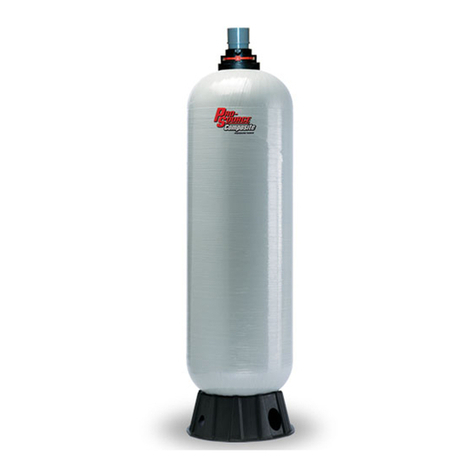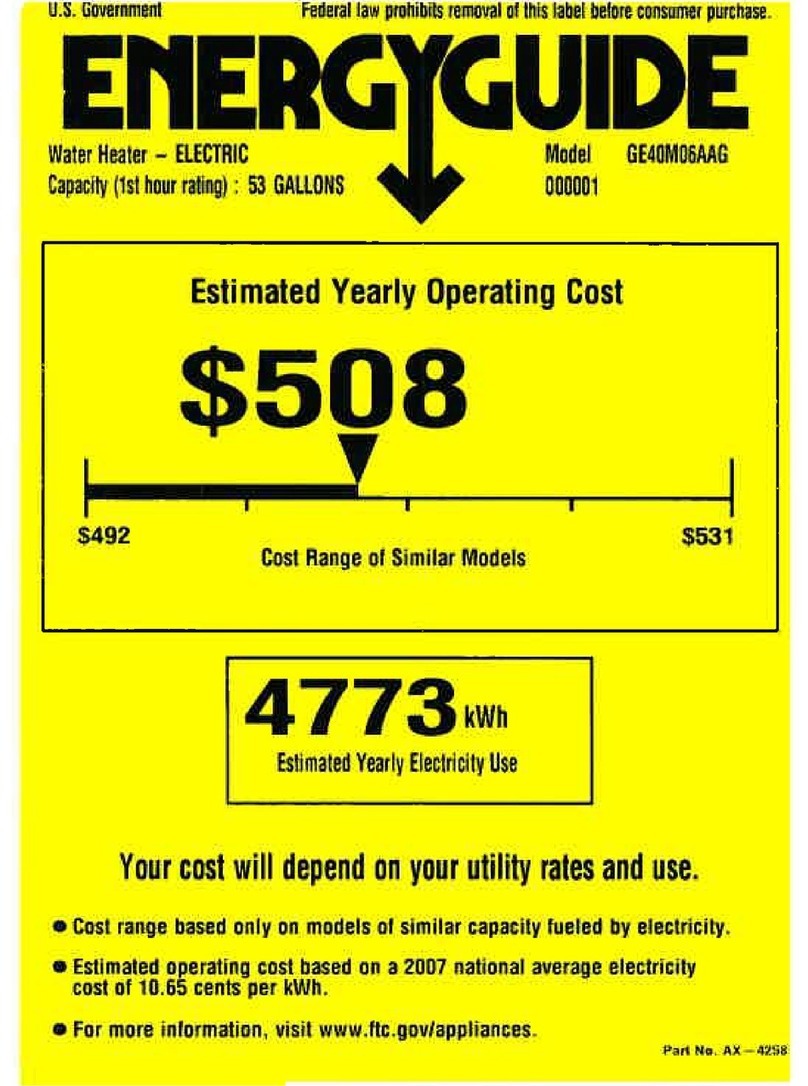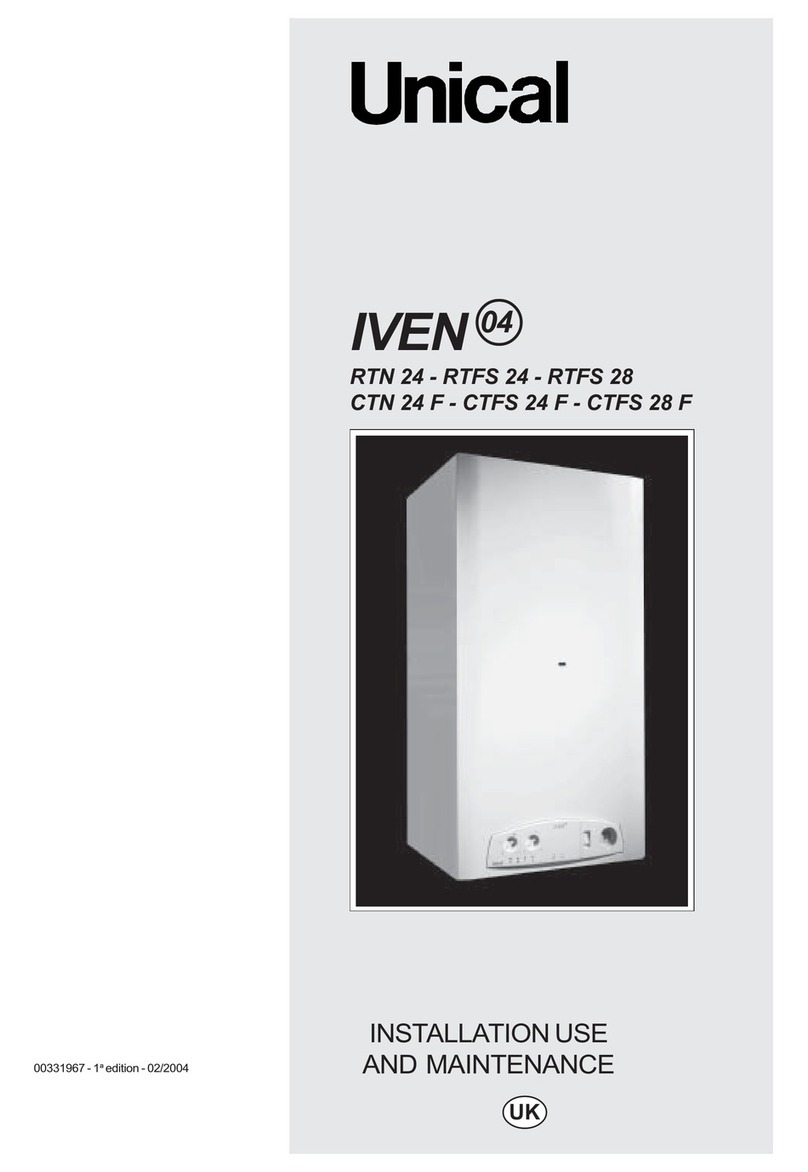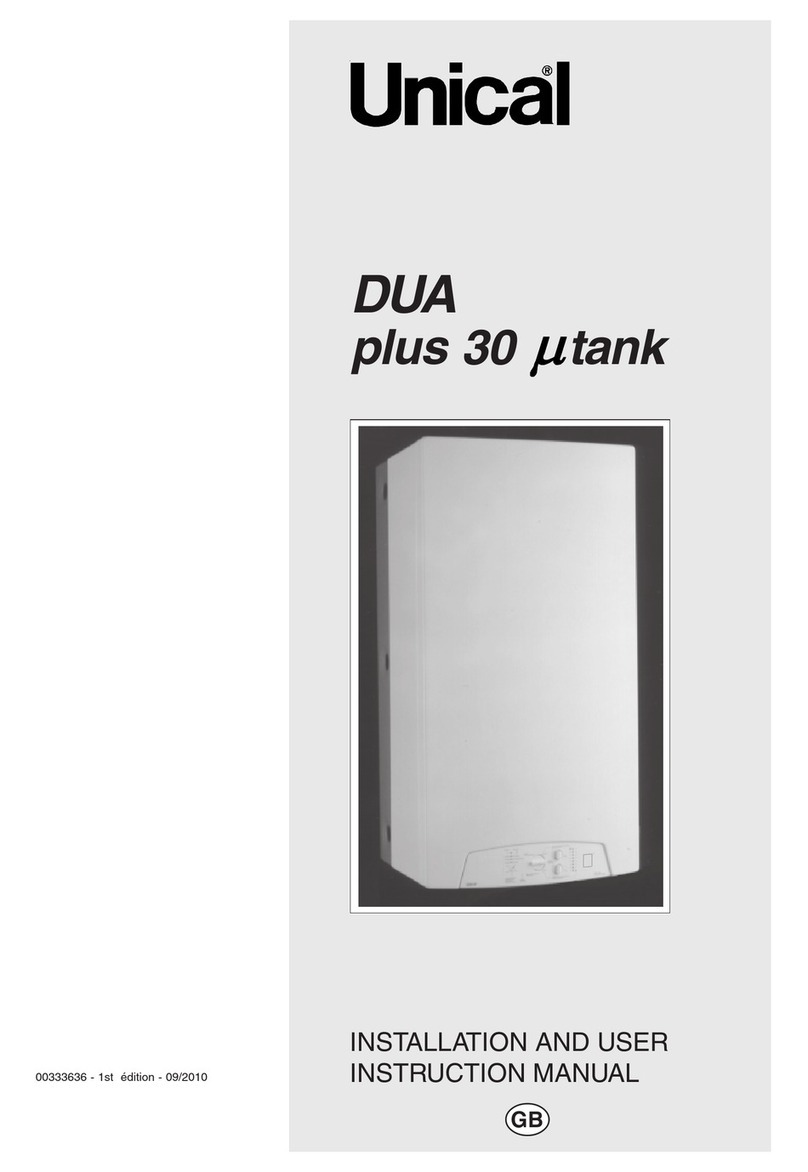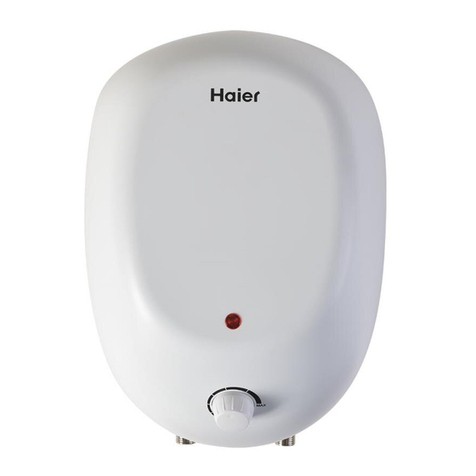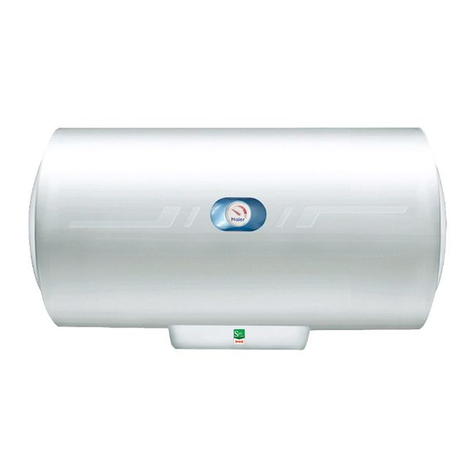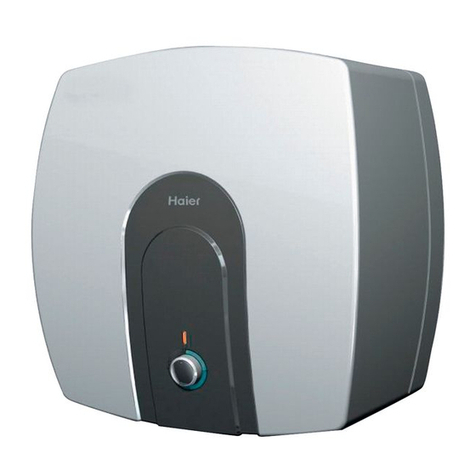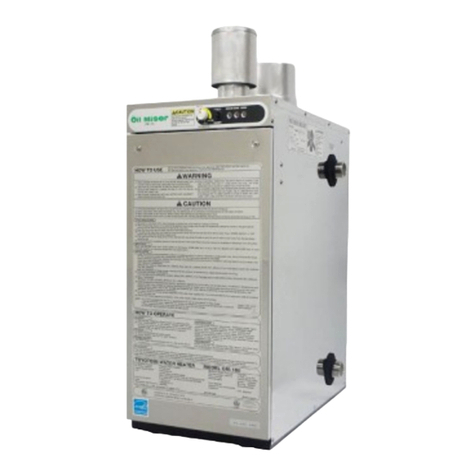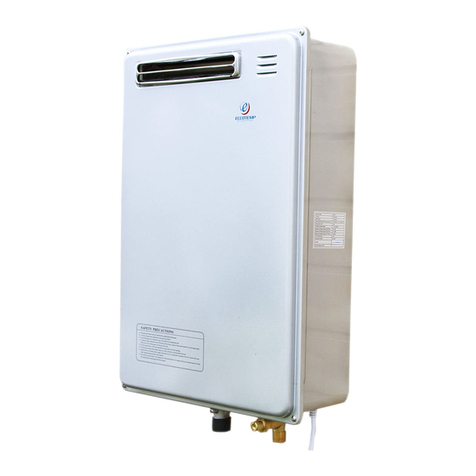Installation info
10
2.2.4 - VENTILATION
The boiler must be installed in a suitable room
according to the rules in force and particu-
larly:
NATURAL DRAUGHT OPEN FLUE BOI-
LERS
(TYPE B11bs and VMC INSTALLATIONS)
The boilers DUA PLUS TN, are open flue
boilers and are foreseen for chimney
connection: the air for combustion is taken
directly from the room in which the boiler is
installed.
The room can have both a direct ventilation
(i.e. with ventilation openings facing out-
wards) or an indirect ventilation (i.e. with ven-
tilation openings facing an adjacent room)
provided that the following requirements are
complied with:
Direct ventilation:
- The room has to have a ventilation open-
ing of, at least,
6 cm² /kW of installed input (see input
table on par. 2.7) and, in no case, lower
than 100 cm² and made directly onto an
external wall.
- The opening has to be as close as possi-
ble to the floor.
- It should not be possible to close it and it
should be protected with a grate not re-
ducing its usefull ventilation section.
- A correct ventilation can be optained also
through the addition of more openings,
provided the addition of the different sec-
tions is not less than that really needed.
- In case it is not possible to make a venti-
lation opening close to the floor, it will be
necessary to increase its usefull section
of at least 50%.
- If an open fire is present in the same room
it needs an indipendent air supply, other-
wise the installation of a type B appliance
is not permitted.
- If in the room there are other devices
which need air for their operation (e.g. a
wall exhauster) the section of the venti-
lation opening has to be the properly si-
zed.
Indirect ventilation
In case it is not possible to make a room
ventilation opening on an external wall, it is
possible to have an indirect ventilation,
sucting the air from an adjacent room,
making an
opening in the lowest part of a door.
This solution is possible only if:
- The adjacent room is not a bed room
- The adjacent room is not a common part
of the building and is not a room with fire
danger (e.g. a fuel deposit, a garage, etc..)
FORCED DRAUGHT ROOM SEALED BOI-
LER
(TYPE C12 - C32 - C42 - C52 - C62 - C82)
The DUA PLUS TFS are forced draught,
room seal-ed boilers; so they do not need
particular ventilation openings for the
combustion air, in the room in which they
are installed.
FORCED DRAUGHT, OPEN FLUE
BOILER
(TYPE B22)
If the DUA PLUS TFS are installed in a room
ac-cording to the chimney configuration on
type B22, the same ventilation requirements
established in paragraphs Direct
ventilation and Indirect ventilation apply.
2.2.5 -FLUE GAS DISCHARGE
SYSTEM
NATURAL DRAUGHT OPEN FLUE BOI-
LERS
Connection to the chimney
A good chimney is very important for the
correct functioning of the boiler; it must
therefore conform with the following
requirements:
- it must be made from waterproof material
and be resistant at the temperature of
the flue gas and relative condensate;
- it must have sufficient mechanical
strength and low thermal conductivity;
- it must be perfectly sealed to prevent
cool-ing due to parasite air inlets;
- it must be as vertical as possible and the
end section must have a chimney cap
which guarantees efficient and constant
evacuation of the combustion products;
- the chimney must have a diameter not
smaller than that of the boiler’s draught
diverter; for chimneys with a square or
rectangular section, the internal section
must be 10% larger than the section of
the connection duct to the draught
diverter.
- starting from the draught diverter, the duct
must have a vertical section with a length
more than twice the diameter, before get-
ting into the chimney.
Direct emission into the atmosphere
Natural draught boilers can discharge
combustion products directly into the atmo-
sphere using a duct, which goes through
the outside walls of the building, connected
to a flue exhaust terminal.
The exhaust duct must also comply with the
following requirements:
- the sub-horizontal part inside the building
must be as short as possible (no more
than 1 m);
- for boilers with vertical discharge, such
as boilers Dua plus B, there must be no
more than 2 direction changes;
- it must receive the discharge from a
single boiler;
- the part going through the wall must be
protected by a sheath duct; the part of
the sheath duct facing the inside of the
build-ing must be sealed and the part
facing outwards must be open;
- the final section, on which the draught
terminal will be fixed, must protrude from
the wall of the building for a length of at
least twice the diameter of the duct;
- the draught terminal must overlap the
connection to the boiler by at least 1.5 m
(see fig. 8).




